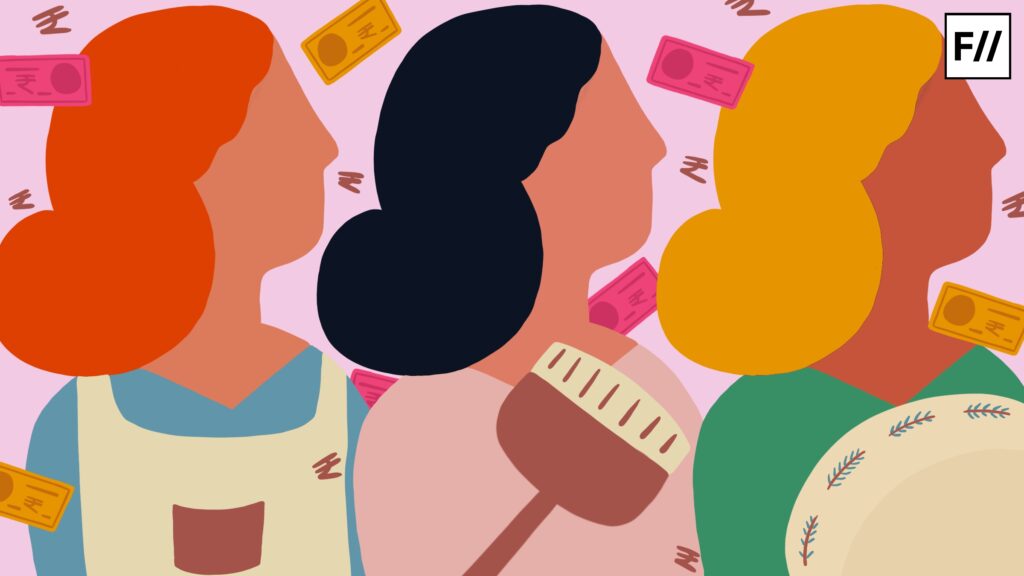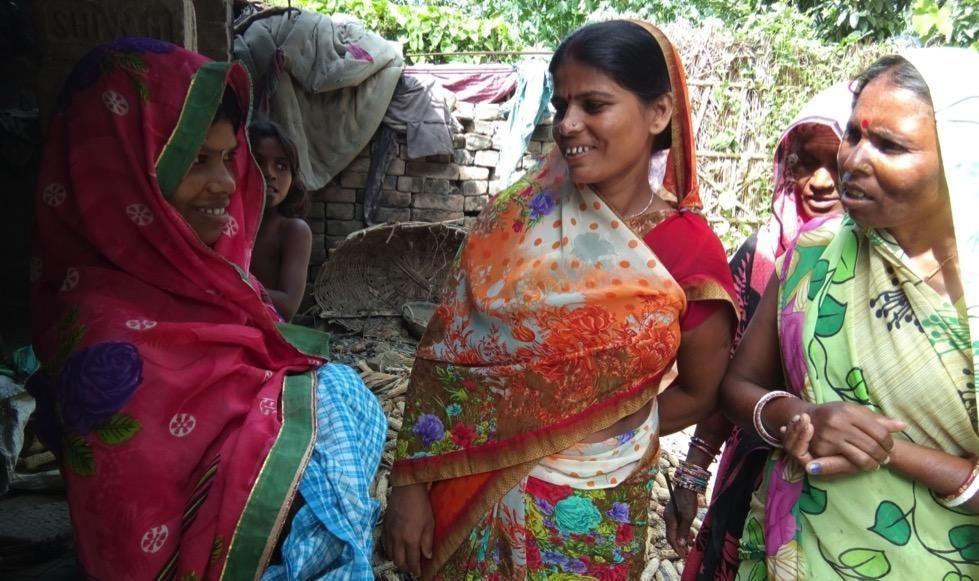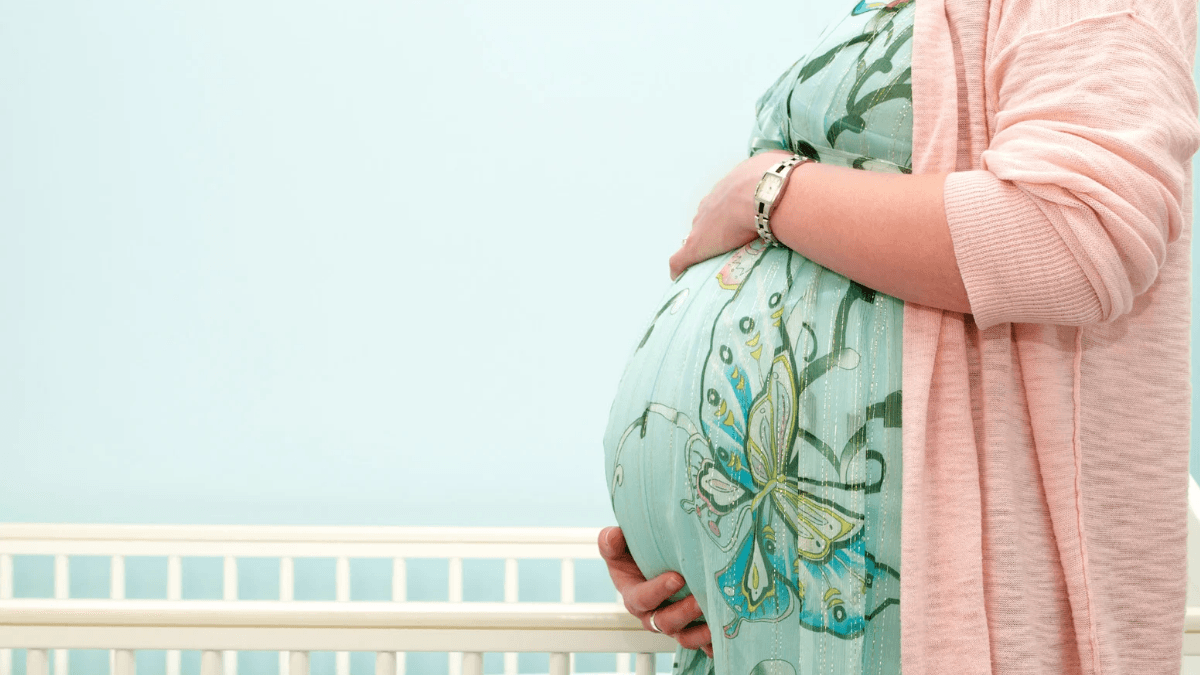The ASHAs are meant to be the key communication channel between the public healthcare system and the rural population and one of their main responsibilities is to promote best practices around maternal and child health. The ASHA workers are often overburdened with work and are unable to provide the best possible healthcare services to the entire population, especially in states like Bihar with high birth rates. Usually, the communities from the lowest rung of society, for whom these services are critical, get left behind.
When Innovators In Health (IIH), a public health organisation in Dalsinghsrai, Bihar started working on a Maternal and Neonatal Health (MNH) program around 2014-15, they felt the need for an additional community member to support the ASHAs in addressing the healthcare needs of the pregnant women and newborns. During close interactions with pregnant women, the organisation figured that in such rural settings, advice from local women who are respected and perceived as knowledgeable, highly influences their behaviour.
In every hamlet, there is a woman who is commonly referred to as ‘chachi’ or ‘didi’ who acts as a mother figure for other young women. With this initiative in mind, the organisation tried to work on this community knowledge and kinship through its ‘community counsellor’ program by identifying and training local women from the community with best practices on MNH. These women with shared socio-demographic and life experiences with the target population proved to be a social capital for the community and have contributed significantly in saving the lives of women and children.
The community counsellors were local women, well aware of the social structures and practices in their immediate community and motivated enough to bring about a change in their community. Initially, those women, who were already active in the community and were helping pregnant women, were considered counsellors. Over time, it was seen that young married women in the community also looked forward to joining the program and learning new skills.
Every year, too many mothers and newborns die in India due to preventable causes. The national maternal mortality rate (MMR) is 97 per 100000 live births (2018-20) and the neonatal mortality rate (NMR) is 22 per 1000 live births (2019). Although the MMR and NMR rates have declined over the years, the progress has not been equal in all regions or within communities belonging to different socio-economic backgrounds.
Also read: Declining Maternal Mortality Ratio In India: An Analysis Of The Progress So Far & Challenges Ahead
An official forum with the community members was used to discuss both technical and non-technical aspects of maternal care such as- identifying high risks in mother and child, care for anaemic women, birth preparedness, kangaroo mother care and other techniques for low birth weight children, counselling and ensuring participation of women during Mahila Mandals.
Who are these community counsellors working for maternal and neonatal health?
The community counsellors were local women, well aware of the social structures and practices in their immediate community and motivated enough to bring about a change in their community. Initially, those women, who were already active in the community and were helping pregnant women, were considered counsellors. Over time, it was seen that young married women in the community also looked forward to joining the program and learning new skills. The organisation supported the community with counsellors who are traditional dai’s, ward members, housewives and daily wage labourers.
Meera Devi, 35, is a community counsellor in Pagda panchayat. In 2007, when ASHAs were getting recruited in her village, she could not apply for the position due to insufficient educational qualification. During her childhood, her family struggled to get two square meals a day, so education was not a priority for her and her five siblings. Although she couldn’t become an ASHA, that didn’t stop her from helping others with health-related issues. Her proactive nature and interest in the Mahila Mandal meetings helped in identifying her as a community counsellor.
The first batch of counsellors had twelve women and over the course of two years, 86 community counsellors were identified and included in the training process. They were of different age groups, ranging from 22 to 60 years and their education level also differed. By becoming a community counsellor, there was a self-realised achievement within these women. Their confidence grew leaps and bounds when they saw that their contribution towards the society saved lives of others.
Meera Devi, 35, is a community counsellor in Pagda panchayat. In 2007, when ASHAs were getting recruited in her village, she could not apply for the position due to insufficient educational qualification. During her childhood, her family struggled to get two square meals a day, so education was not a priority for her and her five siblings. Although she couldn’t become an ASHA, that didn’t stop her from helping others with health-related issues. Her proactive nature and interest in the Mahila Mandal meetings helped in identifying her as a community counsellor. As a counsellor, she has ensured that women go to the hospital for deliveries; she also keeps notifying the ASHA and IIH staff about critical cases in her neighbourhood.
Rinku Devi is a counsellor in one of the most vulnerable hamlets where a majority of the population is from the Musahri community. In January 2018, Shobha Devi, a resident of that ward delivered her newborn at home and due to complications he had to be immediately admitted to the Neonatal Intensive Care Unit (NICU) in the district hospital. Rinku came forward to be with Shobha and stayed with her for the next nine days. She not only took care of the mother and child but also taught Shobha how to breastfeed the child.
Another reason why community counsellors could empathise with other women is that they have faced similar losses as mothers. Nearly 14 counsellors have had one or more children who did not survive due to preventable reasons. All of them said that due to a lack of awareness and in some cases due to not having enough resources, they could not save their children.
A common narrative among counsellors was that they do not want other mothers and families to go through the same ordeal. That acted as a motivation and driving force for them to create awareness about maternal and neonatal healthcare practices. In rural communities, women help others in good faith so that they get similar support when required. This was a common narrative shared by quite a few counsellors.
Also read: Kutch Mahila Vikas Sangathan: Mobilising The Rural Women Of Kutch, Since 1989
Their contribution
Since the beginning the counsellors have supported them in different ways – some accompany pregnant women from their hamlet during delivery, some help in organising monthly community meetings and there are others who regularly inform the team in case of emergencies. There are quite a few counsellors whose prompt actions have saved the lives of pregnant women and their newborn children. In their personal lives, they have greater autonomy in making decisions and more power to act for their children’s benefit. While most of the counsellors are uneducated themselves, they wish to get their children educated, especially their daughters.

Rinku Devi is a counsellor in one of the most vulnerable hamlets where a majority of the population is from the Musahri community. In January 2018, Shobha Devi, a resident of that ward delivered her newborn at home and due to complications he had to be immediately admitted to the Neonatal Intensive Care Unit (NICU) in the district hospital. As Shobha had no one in her family to support her, and her own cognitive development was poor, someone had to accompany and stay with her at the hospital. In this scenario, Rinku came forward to be with Shobha and stayed with her for the next nine days. She not only took care of the mother and child but also taught Shobha how to breastfeed the child. In times of adversity, Shobha found support from Rinku, someone whom she barely knew.
The community counsellor initiative by IIH is not a critique of the existing community health worker cadre of the government. From its inception, the idea has been to support the ASHA workers to provide the best possible care to pregnant women in the most vulnerable wards and ensure no critical case goes unnoticed. For the organisation, the counsellors have often been key informants who were able to identify high-risk pregnant women on time and assisted them in seeking medical care.
Also read: Maternal Mortality Rate: Does India Really Care About Its Mothers?
The focus has been on creating women leaders who are community beacons and can help improve the health outcomes of mothers and children, there should be more organisational initiatives that can continuously engage with these women communities and get them recognised in local forums so that their contribution does not go unnoticed.




